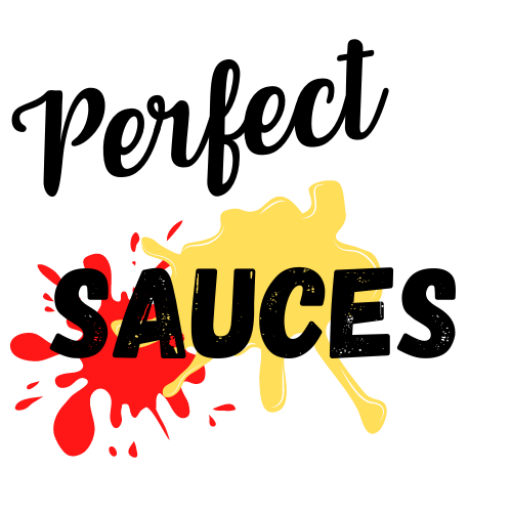Prepared horseradish vs horseradish sauce. It’s time we brought these two into the limelight to find out what exactly separates these spicy ingredients. You’ve probably been in a situation where you need to know a little about prepared horseradish and horseradish sauce before you can make a decision.
So let me help you. I’ll discuss their flavor profiles, texture, and the best ways to use them in your cooking. By the end, you’ll be well-versed enough to make the best decision for your dish.
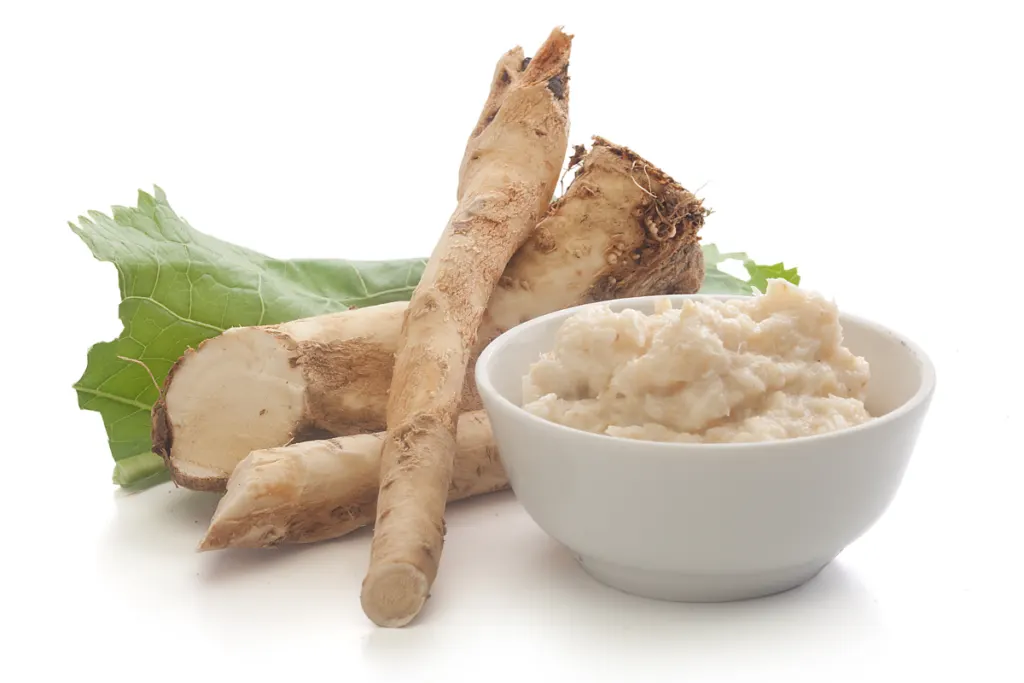
Jump To
- What Is Horseradish Sauce?
- How to make Horseradish Sauce
- What Is Prepared Horseradish?
- How to make Prepared Horseradish
- Similarities and Differences Between Prepared Horseradish vs. Horseradish Sauce
- Benefits of Horseradish
- Can You Use Prepared Horseradish as a Substitute for Horseradish Sauce and Vice Versa?
- When Should You Use Prepared Horseradish and When Should You Use Horseradish Sauce?
What Is Horseradish Sauce?
You may not find horseradish sauce at your typical dinner table, but it’s still a great one that you may end up using. It combines prepared horseradish with other ingredients, such as sour cream, mayonnaise, or cream cheese, for a milder flavor and a creamier texture.
With a creamy texture and mild flavor that can be used in various ways, it finds use as a dip for vegetables, chips, or crackers and as a spread on sandwiches, burgers, or hot dogs. It can even be used as a topping for meats such as roast beef or pork, perfect for adding that little extra kick to the dish.
How to make Horseradish Sauce
To make horseradish sauce, combine freshly grated horseradish root with sour cream or mayonnaise, a splash of white vinegar or lemon juice, and season with salt and pepper. You can add a touch of sugar or honey for sweetness. Mix thoroughly and adjust seasoning to taste. Refrigerate the sauce for at least an hour before serving to allow the flavors to meld.
What Is Prepared Horseradish?
If you’re a fan of spicy condiments, then you’ve probably come across this one. It’s the main base for a horseradish sauce, made from grated horseradish root with vinegar and salt to create a pungent, spicy flavor that can even clear out your sinuses.
It’s usually used with roast beef, deviled eggs, potato salad, and coleslaw, and even in cocktail sauce and Bloody Mary’s. When shopping for it, you’ll typically find it in jars or tubes in the refrigerated section of your grocery store. Prepared horseradish is certainly stronger than its saucy version, so keep this in mind when picking.
How to make Prepared Horseradish
To make prepared horseradish, start by scrubbing a fresh horseradish root and peeling it. Grate the root using a fine grater, as it will release the most flavor when finely grated. Next, mix the grated horseradish with a small amount of white vinegar and a pinch of salt.
For a milder flavor, you can add a splash of sugar or honey. Transfer the mixture to a clean jar and seal it tightly. Allow the flavors to meld for about 3 to 4 weeks in the refrigerator before using. Remember, the longer it sits, the hotter it becomes, so adjust according to your preference.
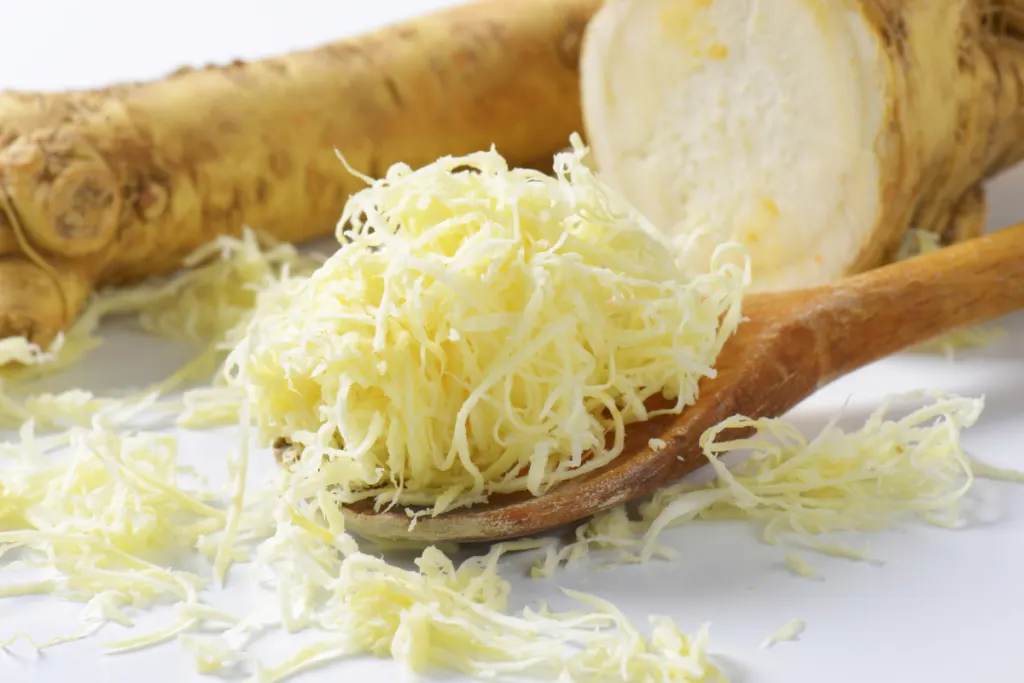
Similarities and Differences Between Prepared Horseradish vs. Horseradish Sauce
Taste
Both have a distinct spicy and pungent flavor with the intensity of the flavor somewhat varying from how they’re made. Prepared horseradish has a more potent and pure horseradish flavor, while horseradish sauce is a mixture of its prepped version and other ingredients, packing a milder flavor with a creamy texture.
Cooking
Prepared horseradish is often used as a condiment for beef, seafood, and sandwiches and can also be used to make cocktail sauce and Bloody Marys.
Horseradish sauce finds use as a dip for vegetables, chips, and crackers, but it can also be used as a spread for sandwiches and burgers thanks to its creamy texture and mild flavor.
Proper Storage
It’s best to store them in the refrigerator after opening to preserve their freshness. Prepared horseradish can last several months in the refrigerator, while horseradish sauce should be consumed within only a few weeks. You should also always check the expiration date and dispose of any product that has gone bad.
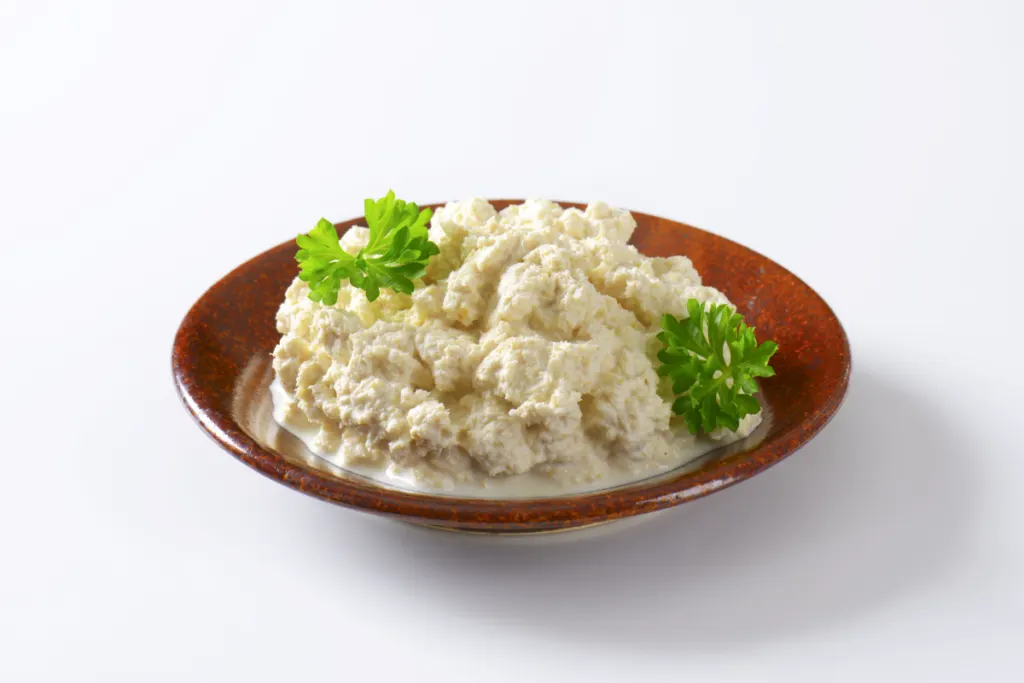
Benefits of Horseradish
Horseradish has always been a powerful herb used for centuries as a natural remedy for various ailments. It’s packed with essential nutrients, including vitamin C, potassium, calcium, and magnesium, all vital for good health. It even has antibacterial and antiviral properties that can help fight off harmful bacteria and viruses in the body.
It can also stimulate digestion and improve the flow of gastric juices, making it an effective digestive aid. The anti-inflammatory properties of horseradish can even reduce inflammation in the body, alleviating pain and swelling. It can also help clear sinuses by opening up nasal passages and promoting mucus flow.
Can You Use Prepared Horseradish as a Substitute for Horseradish Sauce and Vice Versa?
Though both are made from the same root vegetable, they have very different flavors and consistencies from one another, so no. Prepared horseradish has a powerful, pungent flavor, while horseradish sauce has a milder flavor and creamier texture.
But you can remedy this and turn your prepared horseradish into a horseradish sauce, effectively creating a substitute to use. Just add sour cream and mayonnaise until you’ve got a consistency and flavor you like.
Similarly, you can dilute the sauce with vinegar or lemon juice to thin it out and increase the pungency. However, the resulting flavor and texture may not be exactly the same as the original recipe, and it’s always best to use what the recipe recommends if possible.
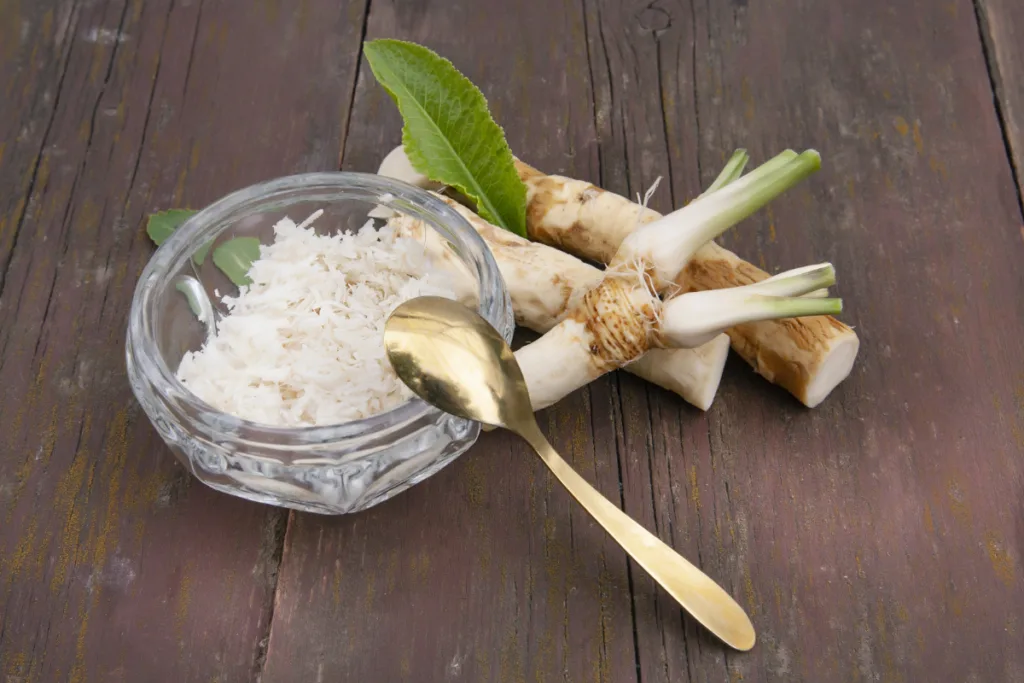
When Should You Use Prepared Horseradish and When Should You Use Horseradish Sauce?
Knowing when to use prepared horseradish and when to use horseradish sauce can be a game changer in terms of taste in your dish, so here are some guidelines to help you make the right choice:
- Use prepared horseradish when you want a strong, pungent flavor that will really pack a punch. As it’s the purer version, it’ll be great for adding a kick to sauces, marinades, and dips.
- You should use the sauce version if you’re aiming for a milder, creamier flavor that won’t overpower your dish. Just perfect for topping sandwiches, burgers, and roast beef.
- If you’re not sure which type of horseradish to use, start with a small amount of either and add more as needed. If it seems too powerful, dial it back and adjust as needed.
- When using prepared horseradish, use gloves or a food processor to avoid getting the oils on your skin, as this can cause irritation.
- If you’re using horseradish sauce, make sure you refrigerate it after opening and use it within a few weeks to avoid spoilage.
